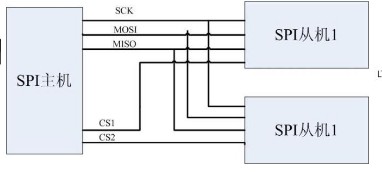
应用环境如下: 控制器 STM32F103
FLASH M25P64
读写方式 SPI
编程环境 MDK
以SPI方式读写FLASH的基本流程如下:
(1)设置SPI的工作模式。
(2)flash初始化。
(3)SPI写一个字节、写使能函数、写数据函数,读数据函数等编写。
(4)主函数编写。
一 设置SPI工作模式。
宏定义
#define SPI_FLASH_CS_LOW() GPIO_ResetBits(GPIOA,GPIO_Pin_4)
#define SPI_FLASH_CS_HIGH() GPIO_SetBits(GPIOA,GPIO_Pin_4)
/* M25P64 SPI Flash supported commands */
#define WRSR 0x01 /* Write Status Register instruction */
#define WREN 0x06 /* Write enable instruction */
#define WRDI 0x04 /* Write disable instruction */
#define READ 0x03 /* Read from Memory instruction */
#define RDSR 0x05 /* Read Status Register instruction */
#define RDID 0x9F /* Read identification */
#define FAST_READ 0x0B /* Fast read Status Register instruction */
#define SE 0xD8 /* Sector Erase instruction */
#define BE 0xC7 /* Bulk Erase instruction */
#define PP 0x02 /* Page prigrame instruction */
#define RES 0xAB /* Sector Erase instruction */
#define WIP_FLAG 0x01 /* Write In Progress (WIP) flag */
#define DUMMY_BYTE 0xA5
#define SIZE sizeof(TEXT_Buffer)
#define SPI_FLASH_PAGESIZE 0x100
#define FLASH_WriteAddress 0x000000
#define FLASH_ReadAddress FLASH_WriteAddress
#define FLASH_SectorToErase FLASH_WriteAddress
#define M25P64_FLASH_ID 0x202017
#define countof(a) (sizeof(a) / sizeof(*(a)))
#define BufferSize (countof(Tx_Buffer)-1)
SPI初始化
void Init_SPI1(void)
{
SPI_InitTypeDef SPI_InitStructure;
GPIO_InitTypeDef GPIO_InitStructure;
/* Enable SPI and GPIO clocks */
RCC_APB2PeriphClockCmd(RCC_APB2Periph_SPI1 | RCC_APB2Periph_GPIOA , ENABLE);
/* Configure SPI pins: SCK, MISO and MOSI */
GPIO_InitStructure.GPIO_Pin = GPIO_Pin_5 | GPIO_Pin_6 | GPIO_Pin_7;
GPIO_InitStructure.GPIO_Mode = GPIO_Mode_AF_PP;
GPIO_InitStructure.GPIO_Speed = GPIO_Speed_50MHz;
GPIO_Init(GPIOA, &GPIO_InitStructure);
/* Configure I/O for Flash Chip select */
GPIO_InitStructure.GPIO_Pin = GPIO_Pin_4;
GPIO_InitStructure.GPIO_Mode = GPIO_Mode_Out_PP;
GPIO_Init(GPIOA, &GPIO_InitStructure);
/* Deselect the FLASH: Chip Select high */
SPI_FLASH_CS_HIGH();
/* SPI configuration */
SPI_InitStructure.SPI_Direction = SPI_Direction_2Lines_FullDuplex; //双工模式
SPI_InitStructure.SPI_Mode = SPI_Mode_Master; //SPI主模式
SPI_InitStructure.SPI_DataSize = SPI_DataSize_8b; //8bit数据
SPI_InitStructure.SPI_CPOL = SPI_CPOL_High; //CLK空闲时为高电平
SPI_InitStructure.SPI_CPHA = SPI_CPHA_2Edge; //CLK上升沿采样,因为上升沿是第二个边沿动作,所以也可以理解为第二个边沿采样
SPI_InitStructure.SPI_NSS = SPI_NSS_Soft; //片选用软件控制
SPI_InitStructure.SPI_BaudRatePrescaler = SPI_BaudRatePrescaler_4; //SPI频率:72M/4 = 18M
SPI_InitStructure.SPI_FirstBit = SPI_FirstBit_MSB; //高位在前
SPI_InitStructure.SPI_CRCPolynomial = 7; //crc7,stm32spi带硬件ecc
SPI_Init(SPI1, &SPI_InitStructure);
/* Enable the SPI */
SPI_Cmd(SPI1, ENABLE);
SPI_FLASH_SendByte(0xFF); // 启动传输
}
二 FLASH初始化
void Init_FLASH(void)
{
GPIO_InitTypeDef GPIO_InitStructure;
/* Enable GPIO clocks */
RCC_APB2PeriphClockCmd(RCC_APB2Periph_GPIOC | RCC_APB2Periph_GPIOA , ENABLE);
/* PA0--SPI_FLASH_HOLD */
GPIO_InitStructure.GPIO_Pin = GPIO_Pin_0;
GPIO_InitStructure.GPIO_Mode = GPIO_Mode_Out_PP;
GPIO_InitStructure.GPIO_Speed = GPIO_Speed_50MHz;
GPIO_Init(GPIOA, &GPIO_InitStructure);
/* PC4-- SPI_FLASH_WP */
GPIO_InitStructure.GPIO_Pin = GPIO_Pin_4;
GPIO_InitStructure.GPIO_Mode = GPIO_Mode_Out_PP;
GPIO_InitStructure.GPIO_Speed = GPIO_Speed_50MHz;
GPIO_Init(GPIOC, &GPIO_InitStructure);
GPIO_SetBits(GPIOA,GPIO_Pin_0);
GPIO_ResetBits(GPIOC,GPIO_Pin_4);
Init_SPI1();
}
三 函数编写
/* 通过SPIx发送一个数据,同时接收一个数据*/
u8 SPI_FLASH_SendByte(u8 byte)
{
/* Loop while DR register in not emplty */
while (SPI_I2S_GetFlagStatus(SPI1, SPI_I2S_FLAG_TXE) == RESET);//如果发送寄存器数据没有发送完,循环等待
/* Send byte through the SPI1 peripheral */
SPI_I2S_SendData(SPI1, byte); //往发送寄存器写入要发送的数据
/* Wait to receive a byte */
while (SPI_I2S_GetFlagStatus(SPI1, SPI_I2S_FLAG_RXNE) == RESET);//如果接收寄存器没有收到数据,循环
/* Return the byte read from the SPI bus */
return SPI_I2S_ReceiveData(SPI1);
}
/* brief Enables the write access to the FLASH. */
void SPI_FLASH_WriteEnable(void)
{
/* Select the FLASH: Chip Select low */
SPI_FLASH_CS_LOW();
/* Send “Write Enable” instruction */
SPI_FLASH_SendByte(WREN);
/* Deselect the FLASH: Chip Select high */
SPI_FLASH_CS_HIGH();
}
/*brief Erases the specified FLASH sector. */
void SPI_FLASH_SectorErase(u32 SectorAddr)
{
/* Send write enable instruction */
SPI_FLASH_WriteEnable();
/* Sector Erase */
/* Select the FLASH: Chip Select low */
SPI_FLASH_CS_LOW();
/* Send Sector Erase instruction */
SPI_FLASH_SendByte(SE);
/* Send SectorAddr high nibble address byte */
SPI_FLASH_SendByte((SectorAddr & 0xFF0000) 》》 16);
/* Send SectorAddr medium nibble address byte */
SPI_FLASH_SendByte((SectorAddr & 0xFF00) 》》 8);
/* Send SectorAddr low nibble address byte */
SPI_FLASH_SendByte(SectorAddr & 0xFF);
/* Deselect the FLASH: Chip Select high */
SPI_FLASH_CS_HIGH();
}
/*brief Writes more than one byte to the FLASH with a single WRITE cycle */
void SPI_FLASH_PageWrite(u8* pBuffer, u32 WriteAddr, u16 NumByteToWrite)
{
/* Enable the write access to the FLASH */
SPI_FLASH_WriteEnable();
/* Select the FLASH: Chip Select low */
SPI_FLASH_CS_LOW();
/* Send “Write to Memory ” instruction */
SPI_FLASH_SendByte(PP);
/* Send WriteAddr high nibble address byte to write to */
SPI_FLASH_SendByte((WriteAddr & 0xFF0000) 》》 16);
/* Send WriteAddr medium nibble address byte to write to */
SPI_FLASH_SendByte((WriteAddr & 0xFF00) 》》 8);
/* Send WriteAddr low nibble address byte to write to */
SPI_FLASH_SendByte(WriteAddr & 0xFF);
while(NumByteToWrite--)
{
SPI_FLASH_SendByte(*pBuffer);
pBuffer++;
}
/* Deselect the FLASH: Chip Select high */
SPI_FLASH_CS_HIGH();
}
/*brief Writes block of data to the FLASH. In this function, the number of */
void SPI_FLASH_BufferWrite(u8* pBuffer, u32 WriteAddr, u16 NumByteToWrite)
{
u8 NumOfPage = 0, NumOfSingle = 0, Addr = 0, count = 0, temp = 0;
Addr = WriteAddr % SPI_FLASH_PAGESIZE;
count = SPI_FLASH_PAGESIZE - Addr;
NumOfPage = NumByteToWrite / SPI_FLASH_PAGESIZE;
NumOfSingle = NumByteToWrite % SPI_FLASH_PAGESIZE;
if (Addr == 0) /* WriteAddr is SPI_FLASH_PAGESIZE aligned */
{
if (NumOfPage == 0) /* NumByteToWrite 《 SPI_FLASH_PAGESIZE */
{
SPI_FLASH_PageWrite(pBuffer, WriteAddr, NumByteToWrite);
}
else /* NumByteToWrite 》 SPI_FLASH_PAGESIZE */
{
while (NumOfPage--)
{
SPI_FLASH_PageWrite(pBuffer, WriteAddr, SPI_FLASH_PAGESIZE);
WriteAddr += SPI_FLASH_PAGESIZE;
pBuffer += SPI_FLASH_PAGESIZE;
}
SPI_FLASH_PageWrite(pBuffer, WriteAddr, NumOfSingle);
}
}
else /* WriteAddr is not SPI_FLASH_PAGESIZE aligned */
{
if (NumOfPage == 0) /* NumByteToWrite 《 SPI_FLASH_PAGESIZE */
{
if (NumOfSingle 》 count) /* (NumByteToWrite + WriteAddr) 》 SPI_FLASH_PAGESIZE */
{
temp = NumOfSingle - count;
SPI_FLASH_PageWrite(pBuffer, WriteAddr, count);
WriteAddr += count;
pBuffer += count;
SPI_FLASH_PageWrite(pBuffer, WriteAddr, temp);
}
else
{
SPI_FLASH_PageWrite(pBuffer, WriteAddr, NumByteToWrite);
}
}
else /* NumByteToWrite 》 SPI_FLASH_PAGESIZE */
{
NumByteToWrite -= count;
NumOfPage = NumByteToWrite / SPI_FLASH_PAGESIZE;
NumOfSingle = NumByteToWrite % SPI_FLASH_PAGESIZE;
SPI_FLASH_PageWrite(pBuffer, WriteAddr, count);
WriteAddr += count;
pBuffer += count;
while (NumOfPage--)
{
SPI_FLASH_PageWrite(pBuffer, WriteAddr, SPI_FLASH_PAGESIZE);
WriteAddr += SPI_FLASH_PAGESIZE;
pBuffer += SPI_FLASH_PAGESIZE;
}
if (NumOfSingle != 0)
{
SPI_FLASH_PageWrite(pBuffer, WriteAddr, NumOfSingle);
}
}
}
}
/*brief Reads a block of data from the FLASH. */
void SPI_FLASH_BufferRead(u8* pBuffer, u32 ReadAddr, u16 NumByteToRead)
{
/* Select the FLASH: Chip Select low */
SPI_FLASH_CS_LOW();
/* Send “Read from Memory ” instruction */
SPI_FLASH_SendByte(READ);
/* Send ReadAddr high nibble address byte to read from */
SPI_FLASH_SendByte((ReadAddr & 0xFF0000) 》》 16);
/* Send ReadAddr medium nibble address byte to read from */
SPI_FLASH_SendByte((ReadAddr& 0xFF00) 》》 8);
/* Send ReadAddr low nibble address byte to read from */
SPI_FLASH_SendByte(ReadAddr & 0xFF);
while (NumByteToRead--) /* while there is data to be read */
{
/* Read a byte from the FLASH */
*pBuffer = SPI_FLASH_SendByte(DUMMY_BYTE);
/* Point to the next location where the byte read will be saved */
pBuffer++;
}
/* Deselect the FLASH: Chip Select high */
SPI_FLASH_CS_HIGH();
}
/*brief Reads FLASH identification. */
u32 SPI_FLASH_ReadID(void)
{
u32 Temp = 0, Temp0 = 0, Temp1 = 0, Temp2 = 0;
/* Select the FLASH: Chip Select low */
SPI_FLASH_CS_LOW();
/* Send “RDID ” instruction */
SPI_FLASH_SendByte(0x9F);
/* Read a byte from the FLASH */
Temp0 = SPI_FLASH_SendByte(DUMMY_BYTE);
/* Read a byte from the FLASH */
Temp1 = SPI_FLASH_SendByte(DUMMY_BYTE);
/* Read a byte from the FLASH */
Temp2 = SPI_FLASH_SendByte(DUMMY_BYTE);
/* Deselect the FLASH: Chip Select high */
SPI_FLASH_CS_HIGH();
Temp = (Temp0 《《 16) | (Temp1 《《 8) | Temp2;
return Temp;
}
四 主函数
void SPI1_Test(void)
{
/* Get SPI Flash ID */
FLASH_ID = SPI_FLASH_ReadID();
FLASH_ID = SPI_FLASH_ReadID();
if (FLASH_ID == M25P64_FLASH_ID)
{
/* Write Tx_Buffer data to SPI FLASH memory */
SPI_FLASH_BufferWrite(Tx_Buffer, FLASH_WriteAddress, BufferSize);
delay_ms(20);
DbgOutputstr(“Write message is ok!\r\n”);
/* Read data from SPI FLASH memory */
memset(Rx_Buffer,0,sizeof(Rx_Buffer));
SPI_FLASH_BufferRead(Rx_Buffer, FLASH_ReadAddress, BufferSize);
DbgOutputstr(“the message you write is:\r\n”);
DbgOutputstr((char *)Rx_Buffer);
DbgOutputstr(“\r\n”);//插入换行
/* Erase SPI FLASH Sector to write on */
SPI_FLASH_SectorErase(FLASH_SectorToErase);
delay_ms(10);
/* Read data from SPI FLASH memory No data -----Erase is ok */
memset(Rx_Buffer,0,sizeof(Rx_Buffer));
SPI_FLASH_BufferRead(Rx_Buffer, FLASH_ReadAddress, BufferSize);
DbgOutputstr(“the message you write is:\r\n”);
DbgOutputstr((char *)Rx_Buffer);
DbgOutputstr(“\r\n”);//插入换行
DbgOutputstr(“\r\n”);//插入换行
delay_ms(1000);
}
}
-
FlaSh
+关注
关注
10文章
1717浏览量
154779 -
SPI
+关注
关注
17文章
1867浏览量
99951
发布评论请先 登录
STM32CubeMx入门教程(6):SPI读写FLAH的应用
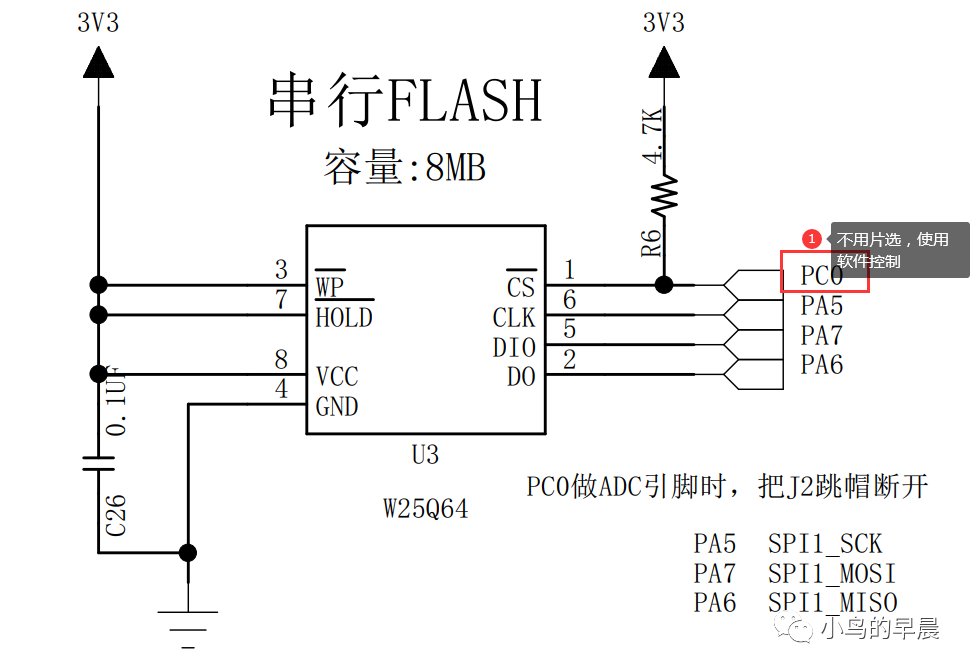
完整的读写flash解读(IIC方式与SPI方式相比较,基于STM32F103ZET6)

单片机学习笔记————STM32使用SPI读写串行Flash(三)

STM32F103学习笔记——SPI读写Flash(二)






 浅析FLASH读写----SPI原理及应用
浅析FLASH读写----SPI原理及应用


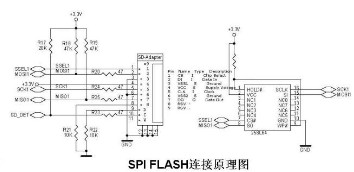
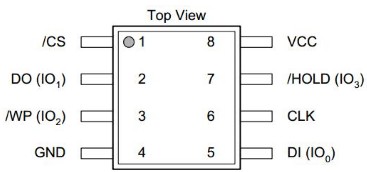
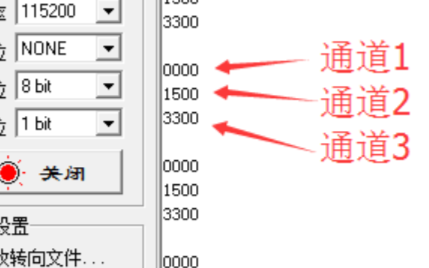

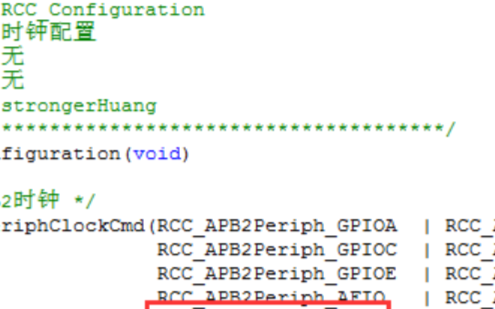










评论